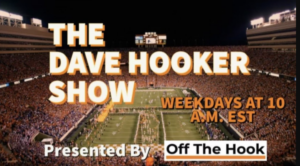Everybody is laughing at the Pac-12 falling apart due to conference realignment. The story is that the Big Ten stretches from coast to coast effectively now, having added the Oregon Ducks and Washington Huskies, and the Big 12 is saved. Ignored in that is SEC complacency, which seems smart on its face.
The SEC still has the best product. When the Texas Longhorns and Oklahoma Sooners join, it will have three of the top five, seven of the top 10 and 11 of the top 25 revenue producing athletic programs. The Big Ten will have two, three and nine respectively despite having two more teams.
That means more schools to disburse revenue to and less money coming in from the schools directly. However, just looking at it that way is short-sighted. The Big Ten isn’t done, and TV deals put the SEC in an even bigger hole when it comes to conference realignment. A good product means nothing if you aren’t compensated properly for it.
Greg Sankey jumped into a 10-year, $3 billion deal with ESPN in 2019 before adding Texas and OU. The Big Ten, meanwhile, got a seven-year, $7 billion deal across three networks. In case you’re wondering, that means the Big Ten will bring in $1 billion a year starting in 2024 while the SEC brings in $300 million from television.
Combining the revenue brought in with TV revenue, estimates were the Big Ten payout would be $80 to $100 million per school while the SEC’s would be $70 million. Even if Oregon and Washington brought in nothing, the discount rate at which they were added would result in a payout of about $75 million per the original 16 schools minimum within the Big Ten.
Of course, given the discount rate and the revenue they’re expected to bring in, you can bet that each of the other 16 Big Ten schools will receive a minimum $15 million more than each SEC school. In an age of NIL, that’s $15 million fewer that boosters have to put up to keep those schools competitive. They can then spend that on buying athletes.
Here is the crux. With that much more money per Big Ten school, you’re about to see schools like the Wisconsin Badgers and Nebraska Cornhuskers able to go into the South and compete toe to toe with the SEC. That’ll make their product better, generating fan interest and further increasing the value of the league when the next round of conference realignment happens.
So what does that all mean? Well, in 2031, the Big Ten will have much greater value per school and will have a ton of leverage to renegotiate a new TV deal worth even more than the $1 billion annual payout now. The SEC will still be stuck in its $300 million annual payout until 2035.
Simply put, the long-term outlook of conference realignment suggests there won’t be a Power Three or even a Power Two. The Big Ten is positioned to be a Power One and even poach SEC programs in the future unless the league acts. After all, why wouldn’t schools like the Tennessee Vols leave and join the Big Ten in the future?
With that in mind, what’s the fix? Well, the SEC has to work overtime to add the Florida State Seminoles and Clemson Tigers. Those are the two most valuable brands in the nation not in the SEC or Big Ten right now. They have to do whatever it takes to poach them from the ACC, and there’s even greater urgency than you might know.
Surprising to many, the Virginia Cavaliers are right on the level of FSU and Clemson in terms of revenue generated. They would be the most coveted by the SEC and the Big Ten because they check all three boxes: value, congruency and a new market. Oh, and they have the academics to get into the Big Ten.
With that in mind, B1G will likely grab UVA if the ACC implodes, which makes it a matter of even greater urgency that the SEC add FSU and Clemson. Should the Notre Dame Fighting Irish go to the Big Ten in the future, then it’ll be time for Sankey and co. to panic. They have to make a move and make it fast.
If the SEC adds FSU and Clemson, they can withstand what will be a growing revenue gap between them and the Big Ten by 2035. At that point, they will have the leverage to negotiate a much better TV deal. Sankey should also move to add some teams that may not up the overall payout value of the league but will help with TV negotiations.
Assuming UVA goes to the Big Ten, one of those teams would be the Virginia Tech Hokies. They bring in the Virginia market and are a cultural fit. The North Carolina Tar Heels could be another one, but they are in danger of going to the Big Ten as well given their academic status. If so, the SEC can bite the bullet and add the N.C. State Wolfpack.
Honestly, there’s an argument to make that the SEC should add FSU, Clemson, UNC, Virginia Tech and the Miami Hurricanes just to keep the Big Ten out of their market. The league has to do something, though, because conference realignment complacency will result in it taking a back seat to its longtime rival in a decade.










